Lesson 1: Clinical Disorders – Part F
| Site: | MoodleHUB.ca 🍁 |
| Course: | Abnormal Psychology 35 RVS |
| Book: | Lesson 1: Clinical Disorders – Part F |
| Printed by: | Guest user |
| Date: | Thursday, 30 October 2025, 1:14 AM |
Table of contents
- Section/Lesson Objectives
- Introduction
- 1 - Substance Intoxication
- 2 - Substance Intoxication - Case Study 16
- 3 - Substance Abuse and Dependence
- 4 - Substance Dependence Symptoms
- 5 - Substance Withdrawal
- 6 - Relative Addictiveness of Various Substances
- 7 - Commonly Abused Drugs
- 8 - What Do Drugs Do to the Brain?
- 9 - What Happens if Someone Keeps Using Drugs?
- 10 - Is Pathological Gambling Similar to Chemical Dependency?
- 11 - Final Note on Clinical Disorders
- Lesson Review
- Assignment
Section/Lesson Objectives
The student will ...
• Understand and describe the general symptoms of the clinical disorders discussed in the course [This lesson]
• Discuss the possible causes of clinical disorders [This lesson]
• Understand and describe the general symptoms of the cognitive disorders discussed in the course
• Discuss the possible causes of cognitive disorders
• Understand and describe the general symptoms of mental retardation
• Discuss the possible causes of mental retardation
• Understand and describe the general symptoms of the personality disorders discussed in the course
• Discuss the possible causes of personality disorders
Introduction
Substance Disorders
Many Canadians use a variety of drugs each day (e.g., caffeine, acetaminophen, alcohol, nicotine). Some drugs, however, are illegal (e.g., crystal meth, hallucinogens, cocaine). Individuals can experience negative effects from both legal and illegal drugs. Intoxication can result from the first use of a drug and, if the drug is used frequently, substance abuse and dependence may occur. When a person who is dependent on a specific drug is suddenly unable to obtain that drug, withdrawal symptoms may appear.
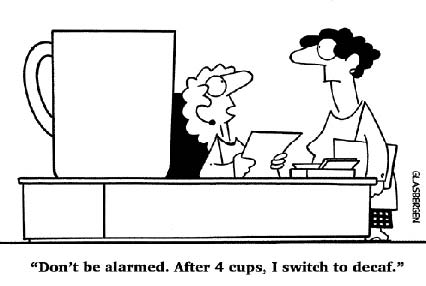
PART F
Substance Intoxication
A diagnosis of intoxication may be made if obvious and significant behavioural and psychological  changes are evident in an individual after he or she introduces a specific substance into his or her body. These changes occur as a direct result of the substance’s biological effects on the central nervous system. When people are intoxicated, their judgement, attention, and concentration are reduced. Intoxication is too often the cause of many otherwise avoidable injuries and fatalities.
changes are evident in an individual after he or she introduces a specific substance into his or her body. These changes occur as a direct result of the substance’s biological effects on the central nervous system. When people are intoxicated, their judgement, attention, and concentration are reduced. Intoxication is too often the cause of many otherwise avoidable injuries and fatalities.
Many symptoms of intoxication depend on the specific substance used, the duration of the usage of the drug, the amount taken, and the tolerance level of the individual. Symptoms may also differ between first-time users and long-term users. Sometimes the user’s expectations influence which symptoms occur. For example, a person at a party may become friendly and talkative when using alcohol but, when home, may become relaxed or tired. In all situations, however, the individual has decreased reaction time, reduced concentration, and impaired perception. Please refer to Case Study 16 for an example of substance intoxication.
PART F
Substance Intoxication - Case Study 16
|
Description Donna, a 35 year-old secretary, sought treatment for what she thought were anxiety attacks. She informed the clinician that her attacks happened about mid-afternoon. She said that she became fidgety, anxious, and easily excited. She also noted that she was sometimes flushed and sweaty as well. Her colleagues commented to her that she was very talkative in the afternoon. After further questioning by the clinician, it was learned that Donna drank five or six cups of coffee each day about mid-afternoon. Diagnosis Her account gave evidence that Donna displayed at least five indicators of caffeine intoxication. The indicators, in the absence of other factors to indicate |
anxiety, clearly show that she had caffeine intoxication. Her admission that she drank five to six cups of coffee before each attack, coupled with the knowledge that the minimum amount of caffeine necessary for intoxication is 250 mg (one cup of coffee has, on average, 125 mg of caffeine), means her DSM diagnosis for Axis I is caffeine intoxication. |
PART F
Substance Abuse and Dependence
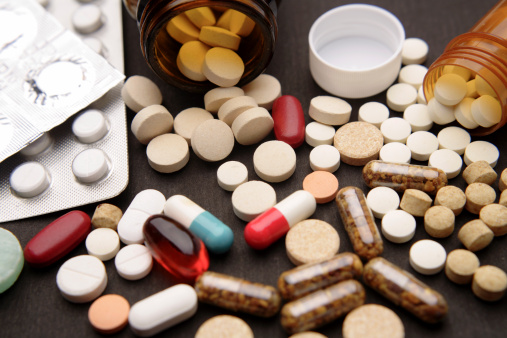 When a person repeatedly uses a substance and the effects are negative (e.g., significant impairment or distress), a substance abuse diagnosis may be made. The negative symptoms, however, must occur for a minimum of 12 months. Consequences of substance abuse include the inability to meet social, occupational, and familial responsibilities. Individuals may also encounter legal problems and repeatedly put themselves in physically harmful situations. In essence, they will continue to use drugs despite the damaging outcomes they encounter.
When a person repeatedly uses a substance and the effects are negative (e.g., significant impairment or distress), a substance abuse diagnosis may be made. The negative symptoms, however, must occur for a minimum of 12 months. Consequences of substance abuse include the inability to meet social, occupational, and familial responsibilities. Individuals may also encounter legal problems and repeatedly put themselves in physically harmful situations. In essence, they will continue to use drugs despite the damaging outcomes they encounter.
Substance dependence may be considered an advanced form of substance abuse. Many individuals consider substance abuse and addiction to be the same condition. An individual suffering from substance dependence shows the dependence by either tolerance to the substance (greater and greater amounts of a drug must be used to experience the same effect), or withdrawal (negative physical symptoms develop when the substance is no longer taken). A person may also show non-physiological dependence to a substance by compulsively using the substance. In either case, physiologically or psychologically dependent individuals are often in a constant state of craving for the substance – and some individuals will do almost anything to obtain the substance they desire.
Individuals must present three or more of the following symptoms and/or indicators of substance dependence, over a 12-month period, to be classified as substance dependent.
PART F
Substance Dependence Symptoms
|
- tolerance to the substance - withdrawal symptoms with discontinued use of the substance - a larger quantity of the substance consumed than was intended and/or the substance used for longer than was intended - much time spent acquiring the substance and/or recovering from the effects of the drug - a desire to restrict the consumption of the substance or stop using it altogether - important social and work-related activities missed and relationships neglected - continued use of the substance despite knowing that the substance is linked to and/or the cause of many problems (physical, psychological, and social) |
Video: Substance Use Disorders
PART F
Substance Withdrawal
When individuals discontinue the use of a substance they are dependent on, 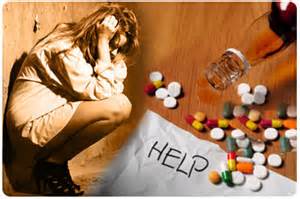 they may experience a variety of symptoms, both physical and psychological. Symptoms are variable but may include anxiety, agitation, irritability, sweating, chills, nausea, vomiting, diarrhea, constipation, seizures, and increased heart and/or respiration rate. Individuals may also experience decreased clarity and awareness of their environment, but they have a reduced ability to focus, sustain, and/or shift attention. They may also become disoriented and forgetful. Withdrawal symptoms can occur within a few hours of discontinued use of a drug, but they can last for more than two weeks with some substances.
they may experience a variety of symptoms, both physical and psychological. Symptoms are variable but may include anxiety, agitation, irritability, sweating, chills, nausea, vomiting, diarrhea, constipation, seizures, and increased heart and/or respiration rate. Individuals may also experience decreased clarity and awareness of their environment, but they have a reduced ability to focus, sustain, and/or shift attention. They may also become disoriented and forgetful. Withdrawal symptoms can occur within a few hours of discontinued use of a drug, but they can last for more than two weeks with some substances.
PART F
Video: The Science of Addiction
Relative Addictiveness of Various Substances
As noted by Joan Rodgers (1994), addicts are not innately defective people. She states that nature has supplied everyone with the ability to become hooked-- and we all engage in addictive behaviours to some degree. Millions of North Americans are apparently hooked, not only on heroin, morphine, amphetamines, tranquilizers, and cocaine, but also on nicotine, caffeine, sugar, steroids, work, theft, gambling, exercise, love, and sex. Also, some drugs produce tolerance and others do not. Heroin addicts, for example, need more and more of the substance to avoid withdrawal symptoms while cocaine produces no tolerance. Cocaine, however, may be just as addictive as heroin because cravings may accelerate to lethal doses. If permitted, lab rats continue to take cocaine until they die.
A person’s vulnerability to a specific substance depends on his or her individual traits, both physiological and psychological. It is possible to rank the addictive potential inherent in substances, however, based on how easy it is to become addicted to them and how difficult it is to stop using them. Please see Table 6.1 for the relative ranking of the 15 most addictive substances and Table 7.1 for a list of commonly abused drugs. Also, for more information on club drugs and other addictive substances, please go to www.aadac.com - a great resource for all ages. It even has games!
Table 6.1:
Top 15 Addictive Substances
|
Substance
|
Rank of addictive potential
|
| nicotine | 1 |
| ice, glass (methamphetamine smoked) | 2 |
| crack | 3 |
| crystal meth (methamphetamine injected) | 4 |
| valium (diazepam) | 5 |
| quaalude (methaqualone) | 6 |
| seconal (secobarbital) | 7 |
| alcohol | 8 |
| heroin | 9 |
| crank (amphetamine taken nasally) | 10 |
| cocaine | 11 |
| caffeine | 12 |
| PCP (phencyclidine) | 13 |
| marijuana | 14 |
| ecstasy (MDMA) | 15 |
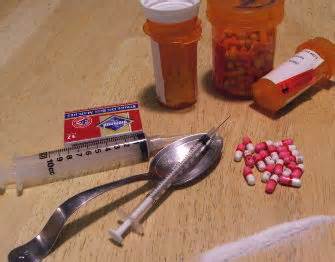
PART F
Commonly Abused Drugs
Table 7.1:
Commonly Abused Drugs
|
Commonly Abused Drugs
|
| alcohol |
| cocaine |
| “club drugs” MDMA (ecstasy), GHB, rohypnol, ketamine, methamphetamine, and LSD |
| heroin |
| inhalants |
| marijuana |
| nicotine |
| PCP |
| prescription medications |
| steroids |
Obviously, the only drugs that you should ever take are those that a doctor prescribes for a given illness or condition. The doctor will suggest a given dosage and you will be given information on side effects the drug can have. The problem with street drugs, is that they are not approved by the FDA so you could be consuming anything and not what you think you are having. In addition, an illegal drug user is much more likely to over dose which can lead to death. Bottom line....THINK...do not put drugs into your body. You only get one body in this lifetime, so make sure you look after it!
Video: Teen Drug Overdose - Brain Damage.
Please note:
If an addiction involves an activity and not a substance (e.g., gambling, sex, exercise), the addiction may be considered an impulse control disorder and not a substance disorder. Scientists are continuously learning more about how any addiction affects the brain, whether activity-based or substance-based.
PART F
What Do Drugs Do to the Brain?
The brain is a very complex organ that we rely on for everything we do. It is made up of many parts that work together. Drugs can alter important brain areas that are necessary for life-sustaining functions and can drive the compulsive drug abuse that marks addiction. There are three areas of the brain that are affected by drug abuse. They include: the brain stem, cerebral cortex, and limbic system.
Let`s look at what each part controls...
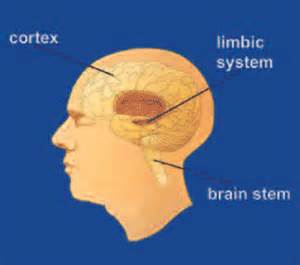 brain stem - controls the basic functions that are critical to life such as heart rate, breathing and sleeping.
brain stem - controls the basic functions that are critical to life such as heart rate, breathing and sleeping.
cerebral cortex - Different area of the cortex control specific functions that allow us to process information from our senses, enabling us to see, feel, hear and taste. The frontal part of the cortex is the thinking center of the brain and allows us to think, plan, solve problems and make decisions.
limbic system - It links together a number of brain structures that control and regulate our ability to feel pleasure. Feeling pleasure motivates us to repeat behaviours that are essential to our existence. The limbic system is activated by healthy life-sustaining activities such as eating and socializing, but it is also activated by drugs of abuse. The limbic system is responsible for our perception of emotions, whether positive or negative, which explains the mood-altering properties of many drugs.
Some drugs lock onto the neuron and act like a pump, so the neuron releases more neurotransmitters. Other drugs block re-absorption or reuptake and cause unnatural floods of neurotransmitters. All drugs of abuse, such as nicotine, cocaine, and marijuana, primarily affect the brain’s limbic system. Scientists call this the “reward” system. Normally, the limbic system responds to pleasurable experiences by releasing the neurotransmitter dopamine, which creates feelings of pleasure.
Some drugs work in the brain because they have a similar size and shape as natural neurotransmitters. In the brain, in the right amount or dose, these drugs lock into receptors and start an unnatural chain-reaction of electrical charges causing neurons to release large amounts of their own neurotransmitter.
Since each drug has its own unique chemical structure, they work differently. However, we do know that there are at least two ways drugs work in the brain:
- Imitating the brain's natural chemical messengers
- Overstimulating the "reward circuit" of the brain (which occurs in the limbic system)
The following two web site provides a wealth of information about the different drugs and how they affect the brain.
|
http://teens.drugabuse.gov/drug-facts/brain-and-addiction http://www.drugabuse.gov/publications/drugs-brains-behavior-science-addiction/drug-abuse-addiction |
PART F
What Happens if Someone Keeps Using Drugs?
 Think about how you feel when something good happens—maybe your team wins a game, you’re praised for something you’ve done well, or you drink a cold lemonade on a hot day—that’s your limbic system at work. Because natural pleasures in our lives are necessary for survival, the limbic system creates an appetite that drives you to seek those things.
Think about how you feel when something good happens—maybe your team wins a game, you’re praised for something you’ve done well, or you drink a cold lemonade on a hot day—that’s your limbic system at work. Because natural pleasures in our lives are necessary for survival, the limbic system creates an appetite that drives you to seek those things.
The first time someone uses a drug of abuse, he or she experiences unnaturally intense feelings of pleasure. The limbic system is flooded with dopamine. Of course, drugs have other effects, too; a first-time smoker may also cough and feel nauseous from toxic chemicals in a tobacco or marijuana cigarette. But the brain starts changing right away as a result of the unnatural flood of neurotransmitters. Because they sense more than enough dopamine, for example, neurons begin to reduce the number of dopamine receptors. Neurons may also make less dopamine. The result is less dopamine in the brain: this is called down regulation. Because some drugs are toxic, some neurons may also die.
Long -Term Effeccts
Drug use can eventually lead to dramatic changes in neurons and brain circuits. These changes can still be present even after the person has stopped taking drugs. Below you can see the changes in the size of the brain of an alcoholic.
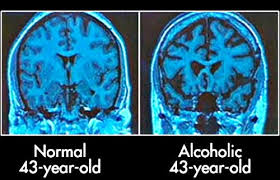
The following example regarding gambling, a non-substance based addiction, is reprinted with permission from the Illinois Institute for Addiction Recovery.
PART F
Is Pathological Gambling Similar to Chemical Dependency?
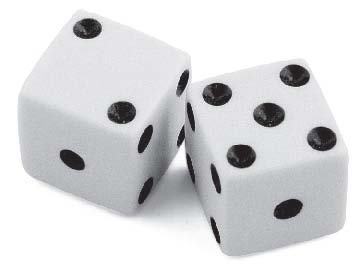 Yes and no. Similarities between pathological gambling and chemical dependency include an inability to stop/control the addiction, denial, severe depression, and mood swings. Pathological gambling and chemical dependency are both progressive diseases with similar phases. These include chasing the first win/high, experiencing blackouts, and using the object of addiction to escape pain. Both pathological gamblers and persons addicted to alcohol or drugs are preoccupied with their addictions, experience low self-esteem, use rituals, and seek immediate gratification.
Yes and no. Similarities between pathological gambling and chemical dependency include an inability to stop/control the addiction, denial, severe depression, and mood swings. Pathological gambling and chemical dependency are both progressive diseases with similar phases. These include chasing the first win/high, experiencing blackouts, and using the object of addiction to escape pain. Both pathological gamblers and persons addicted to alcohol or drugs are preoccupied with their addictions, experience low self-esteem, use rituals, and seek immediate gratification.
Unlike chemical addiction, pathological gambling is a hidden disease. Gamblers do not stumble, have needles in their arm, or smell of cards and dice. Pathological gamblers cannot overdose in the conventional sense, but they experience tremendous financial problems that require immediate attention. More resources are available to chemical dependency than gambling addiction, in part because most people do not perceive gambling as potentially addicting. It is very important that pathological gamblers receive crisis stabilization at the beginning of their treatment, because pathological gamblers have a much higher suicide rate than persons addicted to alcohol or drugs.
PART F
Final Note on Clinical Disorders
The examples of clinical disorders given in this section are just a fraction of the total variety of disorders that health care practitioners deal with. From panic and impulse control disorders (discussed previously) to somatoform disorders (not discussed), the range of disorders is wide.
Lesson Review
Lesson 1 Part F is done. From your reading, can you identify people you know with some of the addictions you read about?
|
To summarize: • Many Canadians use a variety of drugs each day (e.g., caffeine, acetaminophen, alcohol, nicotine). Some drugs, however, are illegal (e.g., crystal meth, hallucinogens, cocaine). Individuals can experience negative effects from both legal and illegal drugs. • A diagnosis of intoxication may be made if obvious and significant behavioural and psychological changes are evident in an individual after he or she introduces a specific substance into his or her body. These changes occur as a direct result of the substance’s biological effects on the central nervous system. When people are intoxicated, their judgement, attention, and concentration are reduced. • When a person repeatedly uses a substance and the effects are negative (e.g., significant impairment or distress), a substance abuse diagnosis may be made. The negative symptoms, however, must occur for a minimum of 12 months. Substance dependence may be considered an advanced form of substance abuse. • When individuals discontinue the use of a substance they are dependent on, they may experience a variety of symptoms, both physical and psychological. • A person’s vulnerability to a specific substance depends on his or her individual traits, both physiological and psychological. • Some drugs lock onto the neuron and act like a pump, so the neuron releases more neurotransmitters. Other drugs block re-absorption or reuptake and cause unnatural floods of neurotransmitters. All drugs of abuse, such as nicotine, cocaine, and marijuana, primarily affect the brain’s limbic system. • Similarities between pathological gambling and chemical dependency include an inability to stop/control the addiction, denial, severe depression, and mood swings. Pathological gambling and chemical dependency are both progressive diseases with similar phases. |
Assignment
Complete S3L1E_FQuiz. You may refer to your lesson while you complete this quiz.
